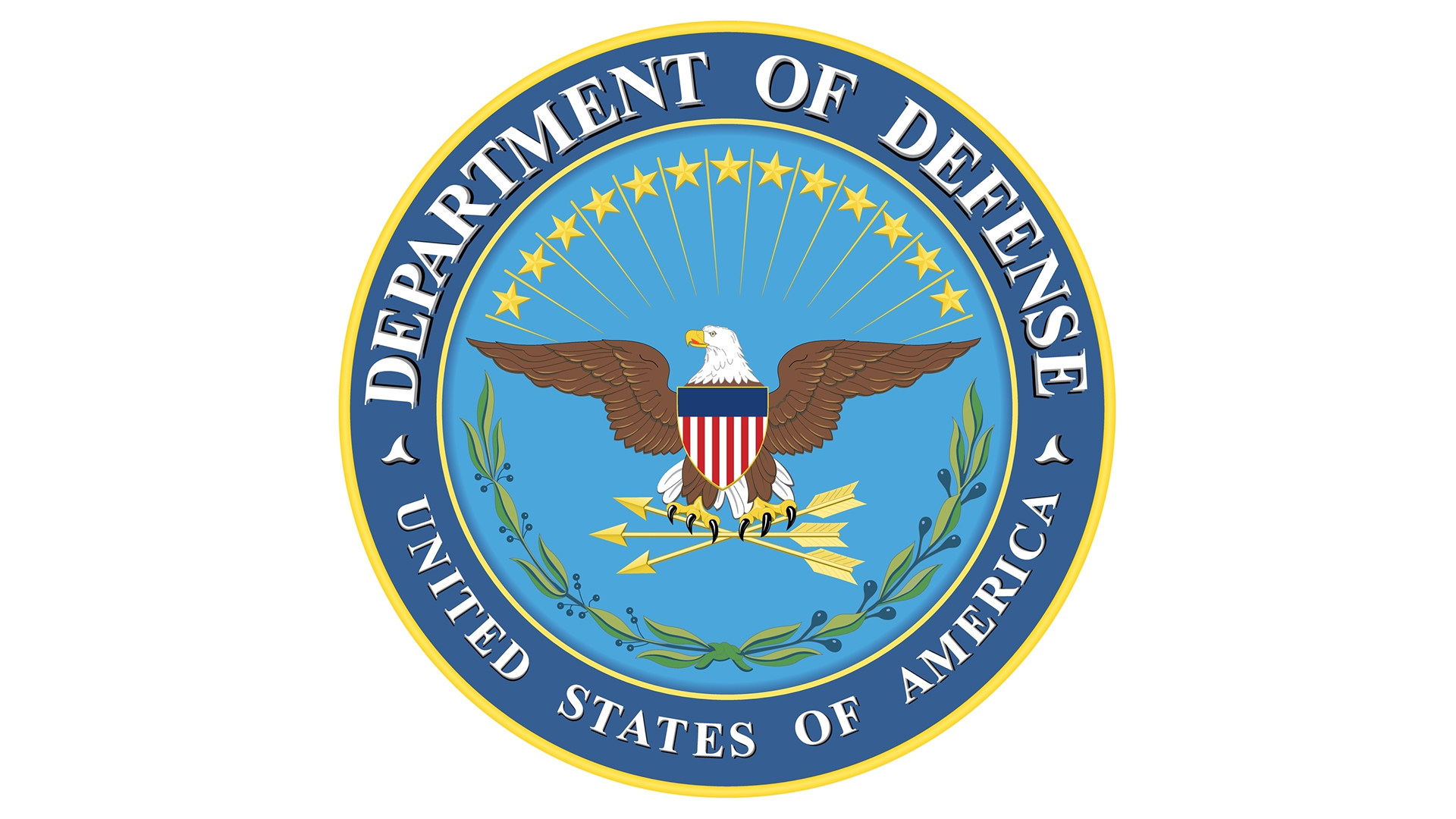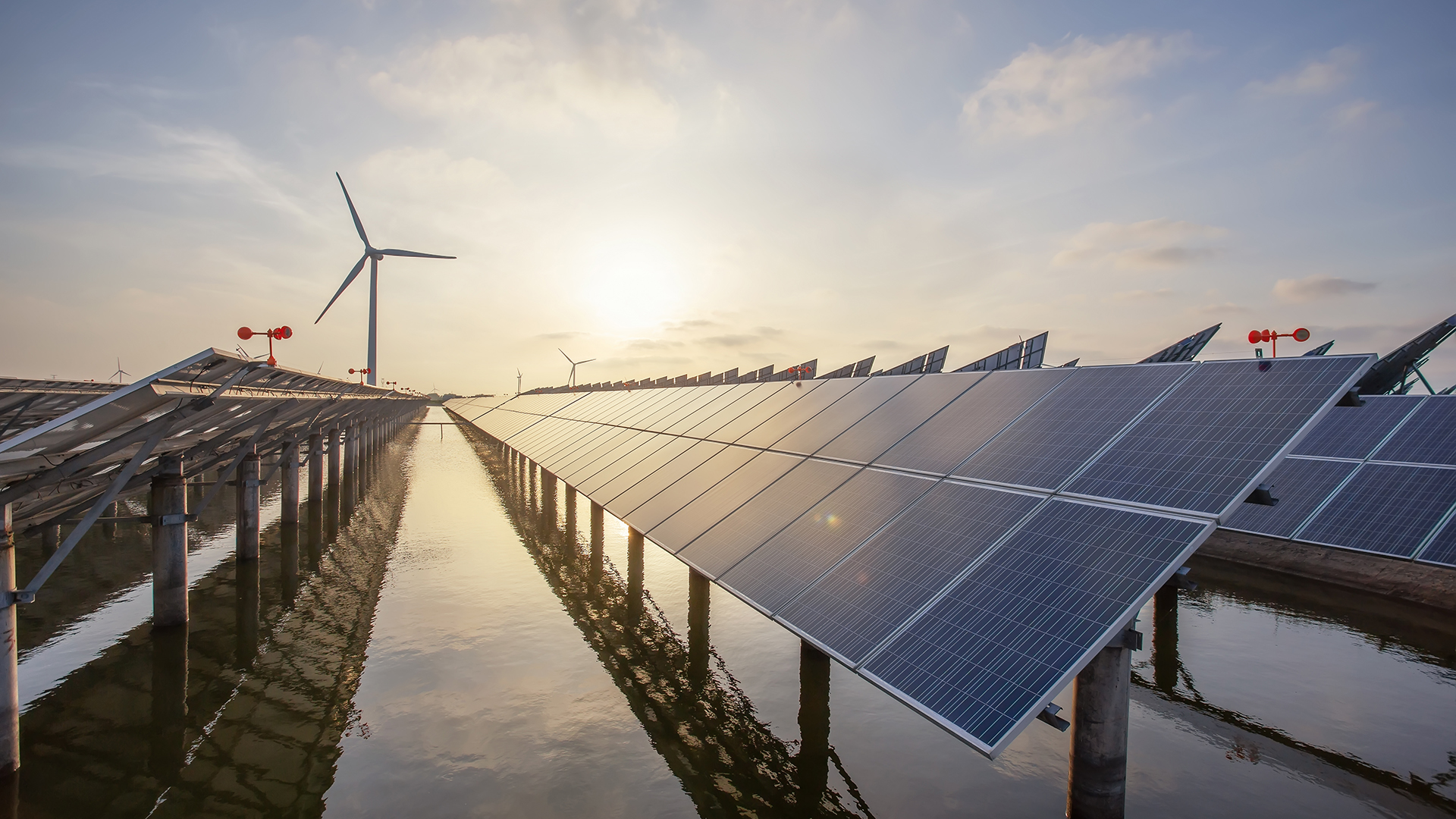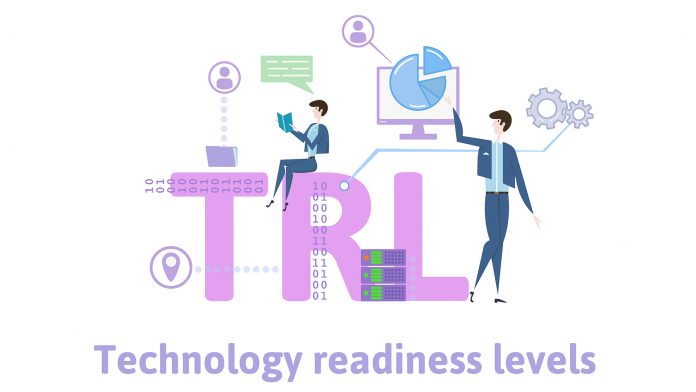American Diversified Enterprises LLC’s Managing Director, CJ Evans, provides an in-depth look at federal funding opportunities for each Technology Readiness Level.
The U.S. Federal government provides funding to advance innovations through thousands of grants, loans, loan guarantees, and cooperative agreements.
There currently is more than $350bn in funding through grants and another $400bn in loan authority, which is available for virtually every Technology Readiness Level (TRL).
This article lists each of the agencies and their offices, divisions, and departments that provide funding for each of the nine TRLs. Hyperlinks are provided so you can visit the agency websites that list their funding opportunities.
A list of current and upcoming grant opportunities, as well as the standing grant and loan guarantee programs for eight federal agencies, which is updated periodically as new grant opportunities become available, can be found on American Diversified Energy’s website under its Find Funding tab.
Federal funding opportunities for each TRL
Preparation of application for TRL-1 funding:
- Describe the idea, concept, approach
- Explain the significance of your idea, concept, approach
- Identify societal, environmental, or economic needs that will be addressed
- Lay out the proposed research plan, objectives, methods, tasks, controls, and feasibility, risk, and solution measures
- Assemble research team
- Identify milestones and go/no-go criteria
- Describe alternatives if the primary approach does not work out
This will be your core proposal, which should be adjusted, amplified, and updated at the conclusion of each TRL.
The first step: Basic Research
Federal funding opportunities:
- National Science Foundation (NSF)
The NSF provides financial support in a wide range of scientific areas, from astronomy to zoology. In addition to funding research in the traditional academic areas, the agency also supports “high risk, high pay off” ideas, novel collaborations, and projects that may seem like science fiction today but may be commonplace tomorrow. With an annual budget of $11.5bn, NSF makes about 12,000 new grant awards each year, supporting all fields of fundamental science and engineering, including energy innovation and energy efficiency.
- U.S. Department of Agriculture (USDA)
- National Institute of Food and Agriculture (NIFA)
NIFA supports research, educational, and extension efforts in a wide range of scientific fields related to agricultural and behavioural sciences. This includes:
- Advanced Technologies: bioenergy, biotechnology, nanotechnology
- Animals: animal breeding, animal health, animal production, aquaculture
- Business and Economics: markets and trade, natural resource economics, small business, StrikeForce
- Education: learning and engagement, minority-serving institutions, workforce development
Environment: climate change, ecosystems, invasive pests and diseases
- Farming and Ranching: agricultural safety, agricultural technology, farmer education, organic agriculture, small and family farms, sustainable agriculture
- Food Science: food quality, food safety
- International: global food security
- Natural Resources: air, forests, grasslands and rangelands, soil, water
- Plants: crop production, pest management, plant breeding, plant health
- U.S. Department of Defense (DOD)
More than 1,000 grant opportunities are offered each year by the DOD through its various branches of service, medical units, laboratories, research projects, engineering divisions, environmental cleanup and restoration programs, business and inventory management divisions, and energy security initiatives. These include:
- Defense Advanced Research Projects (DARPA)
DARPA’s mission is “to make pivotal investments in breakthrough technologies and capabilities for national security.” DARPA has repeatedly delivered on that mission, transforming revolutionary concepts and even seeming impossibilities into practical capabilities. The results have included not only game-changing military capabilities such as precision weapons and stealth technology, but also such icons of modern civilian society such as the Internet, automated voice recognition and language translation, and Global Positioning System receivers small enough to embed in myriad consumer devices.
DARPA explicitly reaches for transformational change instead of incremental advances. It is looking for promising technologies within science and engineering research communities. These new designs and technologies have to radically improve military capabilities, offering “strategies to surprise our adversaries,” with payoffs for non-military uses afterwards (such as the computer, ceramic bearings, and insulators). The DARPA investment has to fundamentally reshape existing fields or create entirely new disciplines and transform these initiatives into profoundly new, game-changing technologies for U.S. national security and the commercial and private sectors.

- Other DOD grant opportunities
While DARPA focuses exclusively on transformational and disruptive innovations, there are many other opportunities to propose new ideas, concepts, and approaches to the DOD. The primary criterion the DOD uses in assessing a proposal is: will its development result in a procurement contract from DOD? In other words, once it reaches TRL-9 and is ready for commercialization, will it improve the DOD’s ability to carry out is mission through better technologies, systems, or operational readiness?
If so, will DOD buy it? If not, you need to look elsewhere for grants.
DOD has set a goal to reduce petroleum use throughout all branches of the military and increase its use of alternative energy sources for all power and fuel consumed by 50 percent within the next five years. Any innovation – at any TRL – that will help DOD meet this goal will be of interest to DOD.
- U.S. Department of Energy (DOE)
- Advanced Research Program Agency-Energy (ARPA-E)
Since 2009, ARPA-E has provided approximately $1.8 billion in R&D funding for more than 660 potentially transformational energy technology projects. ARPA-E funds technology-focused, applied research and development aimed at creating real-world solutions to important problems in energy creation, distribution, and use. ARPA-E issues periodic Funding Opportunity Announcements (FOAs), which are focused on overcoming specific technical barriers around a specific energy area. ARPA-E also issues periodic OPEN FOAs to identify high-potential projects that address the full range of energy-related technologies, as well as funding solicitations aimed at supporting America’s small business innovators.
- Office of Science (OS)
The Office of Science is the basic scientific research arm of the Department of Energy. It issues a cross-cutting, open solicitation annually that is open year-round. It also issues several FOAs each year focusing on specific research needs that are open to one or more institutions, as well as DOE National Laboratory Announcements that are open only to DOE laboratories.
Research to prove viability
Next, TRL-2 invention begins, with federal funding opportunities including:
- National Science Foundation (NSF)
See description of financial support under TRL-1 above
- U.S. Department of Agriculture (USDA)
- National Institute of Food and Agriculture (NIFA)
See description of financial support under TRL-1 above
- U.S. Department of Defense (DOD)
See description of financial support under TRL-1 above
- Defense Advanced Research Projects (DARPA)
See description of financial support under TRL-1 above
- Defense Innovation Unit Experimental (DIUx)
DIUx is a Silicon-Valley based and inspired, fast-moving government entity that provides non-dilutive capital to companies to solve national defense problems. It can move from initial presentation to approval of a funding award in as little as 90 days. It seeks to contract with companies offering disruptive, game-changing solutions in a range of areas – from autonomy and artificial intelligence to human systems, information technology, and space – to solve a host of defence problems. View the PBS NewsHour special on DIUx that aired on August 15, 2018, at: https://www.pbs.org/newshour/show/how-the-pentagon-joins-forces-with-silicon-valley-startups.
- Other DOD grant opportunities
See description of financial support under TRL-1 above
- U.S. Department of Energy (DOE)
DOE funding for ideas, concepts, and approaches in the TRL-2, -3, and -4 stages of development typically come through the DOE’s SBIR/STTR program, which issue SBIR/STTR funding solicitations twice per year tied to specific areas of focus from its various offices, except for ARPA-E. (See the Phase I SBIR/STTR description below.) Each DOE office also issue periodic Funding Opportunity Announcements (FOAs) targeted to a wide range of TRLs for research, development, and demonstration in the fields of interest related to their missions. These include:
- Advanced Research Program Agency – Energy (ARPA-E)
See description of financial support under TRL-1 above
- Office of Science (OS)
See description of financial support under TRL-1 above
- Office of Fossil Energy (FE)
The Office of Fossil Energy is responsible for federal research, development, and demonstration efforts for advanced power generation, power plant efficiency, and carbon capture, utilization, and storage (CCUS) technologies. Its interests include transformational approaches, preliminary design and techno-economic analyses, and new methods for making products from fossil fuel byproducts, wastes, and emissions; reducing the environmental impacts of fossil fuel use; and improving the efficiency, reliability, and flexibility of existing fossil fuel systems and operations.
- Office of Energy Delivery and Reliability (OE) and Office of Cybersecurity, Energy Security, and Emergency Response (CESER)
The Office of Electricity (OE) leads the Department of Energy’s efforts to ensure a resilient, reliable, and flexible electricity system. OE works to develop new technologies to improve the infrastructure that brings electricity into the nation’s homes, offices, and factories. It also oversees the federal and state electricity policies and programs that shape electricity system
planning and market operations. OE accomplishes its mission through research, partnerships, facilitation, modelling, and analytics. Funding interests include research, development, and demonstration of next-generation transformers, distributed energy systems, flexible and adaptable designs for power generation and transmission systems, and grid security and resilience.

- Office of Energy Efficiency and Renewable Energy (EERE)
EERE’s mission is to create and sustain American leadership in the transition to a global clean energy economy. It does this through several offices and programs, including:
- Bioenergy Technologies
The Bioenergy Technologies Office (BETO) works to develop industrially relevant technologies to enable domestically produced biofuels and bioproducts.
- Efficiency
The goal of EERE’s Energy Efficiency program is to work with researchers and industry partners to develop innovative, cost-effective, energy-saving solutions through better power production methods, advanced materials and manufacturing processes, commercial and consumer products, new homes, ways to improve older homes, and green building designs and materials which meet the internationally-used Leadership in Energy and Environmental Design (LEED) green building rating system.
- Renewables
EERE cooperates with a large network of researchers, universities, DOE national laboratories, and industry partners to develop, manufacture, and install cutting-edge,
high-tech renewable energy systems, with the goal of “catalyzing the transformation of the nation’s energy system” to promote “U.S. leadership in science and engineering as a cornerstone of our economic prosperity.”
- Transportation
Through its Vehicle, Bioenergy, and Fuel Cell Technologies Offices, EERE advances the development of next-generation technologies to make transportation cleaner and more efficient through advanced combustion engine and vehicle efficiency, innovative new transportation technologies, and solutions that put electric drive and fuel cell vehicles on the road and replace oil with clean domestic fuels.
- Phase I Small Business Innovation Research (SBIR) and Small Business Technology Transfer (STTR)
The Small Business Innovation Research Program (SBIR) provides more than $2 billion per year in non-recourse contracts and grants to small U.S.-owned companies to develop new products and services that are based on innovative, unproven concepts and technologies.
The objective of the SBIR program is to support innovation that leads to the commercialization of new technologies and final products and services to benefit U.S. communities, companies, and residents. The program is broken down into three phases.
The objective of Phase I is to establish the technical merit, feasibility, and commercial potential of an applicant’s proposed research and research and development (R/R&D) efforts and to determine the quality of performance of the small business organization prior to providing further federal support in Phase II. SBIR Phase I awards normally do not exceed $150,000 (although, in a few cases, awards may go up to $225,000) and are for projects lasting 6 to 12 months. The agencies that offer SBIR grants are as follows.
- U.S. Department of Agriculture (USDA)
- U.S. Department of Commerce (DOC):
- National Institute of Standards (NIS)
- National Oceanic and Atmospheric Administration (NOAA)
- U.S. Department of Defense (DOD) – also offers Phase I STTR grants
- U.S. Department of Energy (DOE) – also offers Phase I STTR grants
- U.S. Department of Health and Human Services (HHS), including the National Institutes of Health (NIH) – also offers Phase I STTR grants
- U.S. Department of Homeland Security (DHS)
- U.S. Department of Transportation (DOT)
- U.S. Environmental Protection Agency (EPA)
- National Aeronautics and Space Administration (NASA) – also offers Phase I STTR grants
- National Science Foundation (NSF) – also offers STTR grants.
Technology development
TRL-3 initiation of R&D begins.
Federal funding opportunities:
- National Science Foundation (NSF)
See description of financial support under TRL-1 above
- U.S. Department of Agriculture (USDA)
- National Institute of Food and Agriculture (NIFA)
See description of financial support under TRL-1 above
- U.S. Department of Defense (DOD)
- Defense Advanced Research Projects (DARPA)
See description of financial support under TRL-1 above
- Defense Innovation Unit Experimental (DIUx)
See description of financial support under TRL-2 above
- Other DOD grant opportunities
See description of financial support under TRL-1 above
- U.S. Department of Energy (DOE)
- Advanced Research Program Agency-Energy (ARPA-E)
See description of financial support under TRL-1 above
- Office of Science (OS)
See description of financial support under TRL-1 above
- Office of Fossil Energy (FE)
See description of financial support under TRL-2 above
- Office of Energy Delivery and Reliability (OE) and
Office of Cybersecurity, Energy Security, and Emergency Response (CESER)
See description of financial support under TRL-2 above
- Office of Energy Efficiency and Renewable Energy (EERE)
See description of financial support under TRL-2 above
- Phase I Small Business Innovation Research (SBIR) and Small Business Technology Transfer (STTR)
See description of Phase I financial support under TRL-2 above
- U.S. Department of Agriculture (USDA)
- U.S. Department of Commerce (DOC):
- National Institute of Standards (NIS)
- National Oceanic and Atmospheric Administration (NOAA)
- U.S. Department of Defense (DOD)
- U.S. Department of Energy (DOE)
- U.S. Department of Health and Human Services (HHS), including the National Institutes of Health (NIH)
- U.S. Department of Homeland Security (DHS)
- U.S. Department of Transportation (DOT)
- U.S. Environmental Protection Agency (EPA)
- National Aeronautics and Space Administration (NASA)
- National Science Foundation (NSF)
TRL-4 Integration of basic components
Federal funding opportunities:
- National Science Foundation (NSF)
See description of financial support under TRL-1 above
- U.S. Department of Agriculture (USDA)
- National Institute of Food and Agriculture (NIFA)
See description of financial support under TRL-1 above
- U.S. Department of Defense (DOD)
- Defense Advanced Research Projects (DARPA)
See description of financial support under TRL-1 above
- Defense Innovation Unit Experimental (DIUx)
See description of financial support under TRL-2 above
- Other DOD grant opportunities
See description of financial support under TRL-1 above
- U.S. Department of Energy (DOE)
- Advanced Research Program Agency-Energy (ARPA-E)
See description of financial support under TRL-1 above
- Office of Science (OS)
See description of financial support under TRL-1 above
- Office of Fossil Energy (FE)
See description of financial support under TRL-2 above
- Office of Energy Delivery and Reliability (OE) and
Office of Cybersecurity, Energy Security, and Emergency Response (CESER)
See description of financial support under TRL-2 above
- Office of Energy Efficiency and Renewable Energy (EERE)
See description of financial support under TRL-2 above
- Phase II Small Business Innovation Research (SBIR) and Small Business Technology Transfer (STTR)
The objective of Phase II is to continue the R/R&D efforts initiated in Phase I. Funding is based on the results achieved in Phase I and the scientific and technical merit and commercial potential of the project proposed in Phase II. Only Phase I awardees are eligible for a Phase II award. SBIR Phase II awards normally do not exceed $1.5 million in total costs for two years.
- U.S. Department of Agriculture (USDA)
- U.S. Department of Commerce (DOC):
- National Institute of Standards (NIS)
- National Oceanic and Atmospheric Administration (NOAA)
- U.S. Department of Defense (DOD) – also offers Phase II STTR grants
- U.S. Department of Energy (DOE) – also offers Phase II STTR grants
- U.S. Department of Health and Human Services (HHS), including the National Institutes of Health (NIH) – also offers Phase II STTR grants
- U.S. Department of Homeland Security (DHS)
- U.S. Department of Transportation (DOT)
- U.S. Environmental Protection Agency (EPA)
- National Aeronautics and Space Administration (NASA) – also offers Phase II STTR grants
- National Science Foundation (NSF) – also offers Phase II STTR grants
TRL-5 Validation of operational integrity
Federal funding opportunities:
- National Science Foundation (NSF) – See description of financial support under TRL-1 above
- U.S. Department of Agriculture (USDA)
- National Institute of Food and Agriculture (NIFA) – See financial support under TRL-1 above
- U.S. Department of Defense (DOD)
- Defense Advanced Research Projects (DARPA) – See financial support under TRL-1 above
- Defense Innovation Unit Experimental (DIUx) – See financial support under TRL-2 above
- Other DOD grant opportunities – See financial support under TRL-1 above
- U.S. Department of Energy (DOE)
- Advanced Research Program Agency-Energy (ARPA-E) – See financial support under TRL-1 above
- Office of Science (OS) – See financial support under TRL-1 above
- Office of Fossil Energy (FE) – See financial support under TRL-2 above
- Office of Energy Delivery and Reliability (OE) and Office of Cybersecurity, Energy Security, and Emergency Response (CESER) – See description of financial support under TRL-2 above
- Office of Energy Efficiency and Renewable Energy (EERE) – See financial support under TRL-2 above
- Phase II Small Business Innovation Research (SBIR) and Small Business Technology Transfer (STTR) – See description of Phase II financial support under TRL-4 above
- U.S. Department of Agriculture (USDA)
- U.S. Department of Commerce (DOC):
- National Institute of Standards (NIS)
- National Oceanic and Atmospheric Administration (NOAA)
- U.S. Department of Defense (DOD)
- U.S. Department of Energy (DOE)
- U.S. Department of Health and Human Services (HHS), including the National Institutes of Health (NIH)
- U.S. Department of Homeland Security (DHS)
- U.S. Department of Transportation (DOT)
- U.S. Environmental Protection Agency (EPA)
- National Aeronautics and Space Administration (NASA)
- National Science Foundation (NSF)

TRL-6 Model, prototype, or pilot testing
Federal funding opportunities:
As new technologies, concepts, processes, and approaches move into TRL-6, the pool of grants and grant sources falls off – significantly, by more than $10bn – just as the costs for each TRL escalate. For example:
- The 10,000+ grants and $7.5 billion of funding offered each year by NSF focus solely on basic and applied research. The bulk of NFS’s solicitations are targeted to TRLs 1-3, with a smaller number of grants for TRLs-4 and -5.
- The $300 million or so in annual grants available from DOE’s Office of Science and ARPA-E, with few exceptions, also focus on basic and applied research and technology development.
- Finally, the $2.5 billion offered each year through the SBIR/STTR program focus solely on stimulating innovation and moving promising ideas and concepts up through TRL-5. While the SBIR/STTR program is targeted to ideas and concepts that are initiated with a view toward eventual commercialization, its Phase III stage does not include any additional grant funding:
- Phase III Small Business Innovation Research (SBIR) and Small Business Technology Transfer (STTR)
The objective of the SBIR/STTR Phase III, where appropriate, is for the small business to pursue commercialization objectives resulting from the Phase I/II R/R&D activities. The SBIR program does not fund Phase III; instead, the agencies that participate in the SBIR/STTR program offer multiple grant and incentive funding opportunities through their standing programs and other solicitations to fund further development of the technologies, concepts and approaches that show commercial promise in Phase 1/II R/R&D. For some federal agencies, Phase III may involve follow-on non-SBIR funded R&D or production contracts for products, processes, or services intended for use by the U.S. government.
Most of the agencies that participate in the SBIR/STTR program, therefore, are potential sources of grants for TRL-6, -7, and -8:
- U.S. Department of Agriculture (USDA)
- U.S. Department of Commerce (DOC):
- National Institute of Standards (NIS)
- National Oceanic and Atmospheric Administration (NOAA)
- U.S. Department of Defense (DOD)
- U.S. Department of Energy (DOE)
- U.S. Department of Health and Human Services (HHS), including the National Institutes of Health (NIH)
- U.S. Department of Homeland Security (DHS)
- U.S. Department of Transportation (DOT)
- U.S. Environmental Protection Agency (EPA)
- National Aeronautics and Space Administration (NASA)
Follow-on grants for projects funded at earlier TRL stages, as well as grants for projects applying for grants at TRL-6, also are available from:
- U.S. Department of Agriculture (USDA)
- National Institute of Food and Agriculture (NIFA)
See description of financial support under TRL-1 above
- U.S. Department of Defense (DOD)
- Defense Advanced Research Projects (DARPA)
See description of financial support under TRL-1 above
- Defense Innovation Unit Experimental (DIUx)
See description of financial support under TRL-2 above
- Other DOD grant opportunities
See description of financial support under TRL-1 above
- U.S. Department of Energy (DOE)
- Office of Fossil Energy (FE)
See description of financial support under TRL-2 above
- Office of Energy Delivery and Reliability (OE) and Office of Cybersecurity, Energy Security, and Emergency Response (CESER)
See description of financial support under TRL-2 above
- Office of Energy Efficiency and Renewable Energy (EERE)
See description of financial support under TRL-2 above
Other Federal Government Agencies beyond those listed above and those that participate in the SBIR/STTR program have grant programs and offer funding that may assist in, or supplement other grants, in carrying out TRL-6. For a list of these agencies, see TRL-7 below.
TRL-7 Demonstration-scale testing
Federal funding opportunities:
See the description of funding opportunities for TRL-6 above. Other funding opportunities may be available if there is a fit with your technology, concept, process, or approach, from:
- U.S. Department of Commerce (DOC)
DOC has one overarching goal: Helping the American Economy Grow. The DOC promotes job creation and economic growth, provides the data necessary to support commerce, oversees ocean and coastal navigation, and fosters innovation by setting standards and conducting foundational research and development. Of its nine bureaus, five provide occasional grant and funding opportunities that can assist with moving commerce-related and oceanic- and atmospheric-related technologies, concepts, and approaches through advanced TRLs. These include:
- Economic Development Administration (EDA)
- National Institute of Standards & Technology (NIST)
- National Oceanic and Atmospheric Administration (NOAA)
- Institute of Standards & Technology (NIST)
- National Telecommunications & Information Administration (NTIA)
- U.S. Department of the Interior (DOI)
DOI manages the nation’s lands. Its current priorities are to maintain and expand conservation stewardship on public lands, sustainably develop the nation’s energy and natural resources, modernize the infrastructure overseen by DOI, and promote economic development for Tribal Nations and ensure their sovereignty.

Several of DOI’s nine bureaus offer grants to support energy innovation, adoption, and deployment, including:
- Bureau of Indian Affairs (BIA)
- Bureau of Land Management (BLM)
- Bureau of Ocean Energy Management (BOEM)
- Bureau of Reclamation (BOR)
- National Park Service (NPS)
- Office of Surface Mining Reclamation and Enforcement
- U.S. Fish and Wildlife Service (FWS)
- U.S. Geological Survey (USGS)
- U.S. Department of Transportation (DOT)
DOT has embarked on an aggressive program to promote sustainability in its policies, operations, investments and research and ensure that by 2020 not less than 20% of electric energy consumed by DOT comes from renewable energy
sources. DOT also has made a commitment to pursue opportunities for the national transportation system that will promote energy and natural resource conservation, decrease emissions of greenhouse gases (GHGs), reduce dependence on fossil fuels, and increase energy efficiency.
One innovative program, the Smart Cities Challenge, selected Columbus, Ohio, in June 2016 to receive $40 million from DOT to become the first U.S. city to fully integrate innovative technologies – self-driving cars, connected vehicles, and smart sensors – into its transportation network. Another DOT initiative is exploring Renewable Energy Uses in Highway Rights of Way.
TRL-8 Precommercial demonstration: Proof of operational technology, concept, or approach
Federal funding opportunities:
See TRL-7 above.

TRL-9 First commercial deployment
Federal funding opportunities:
- U.S. Department of Agriculture (USDA)
- Rural Development
Section 9003 Biorefinery, Renewable Chemical, and Bioproduct Manufacturing Assistance Loan Guarantee
- U.S. Department of Defense (DOD)
- Defense Advanced Research Projects (DARPA)
See description of financial support under TRL-1 above
- Defense Innovation Unit Experimental (DIUx)
See description of financial support under TRL-2 above
- Other DOD grant opportunities
See description of financial support under TRL-1 above
- U.S. Department of Energy (DOE)
- Loan Program Office (LPO)
Title 17 Loan Guarantee Program:
-
- Renewable Energy and Energy Efficiency Projects
- Advanced Fossil Energy Projects
- Advanced Nuclear Energy Projects
- Tribal Energy Projects
- Advanced Technology Vehicle Manufacturing (ATVM) Direct Loan Program
- U.S. Treasury
- Investment Tax Credit (ITC)
The ITC reduces federal income taxes based on capital investment in innovative and renewable energy projects (measured in dollars). The ITC is earned when the equipment is placed into service.
- Production Tax Credit (PTC)
The PTC reduces federal income taxes on innovative and renewable energy projects based on the electrical output (measured in kilowatt-hours, or kWh) of grid-connected renewable energy facilities.
- Modified Accelerated Cost-Recovery System (MACRS)
Or Bonus Depreciation allows businesses and project developers to reduce their federal taxes through a deduction for depreciation when renewable energy equipment or facilities producing renewable energy are placed into service. With the passage of the 2017 Tax Cuts and Jobs Act, the first-year depreciation allowance was increased from 50% to 100%. Several other types of technologies and properties that incorporate innovative concepts also are now eligible for MARCS program bonus depreciation.
Development is Complete, and commercial Roll-Out Begins
Federal funding opportunities:
- U.S. Department of Agriculture (USDA)
- Rural Development Business Programs:
- Business & Industry (B&I) Loan Guarantees
- Value-Added Producer Grants
- Rural Development Energy Programs:
- Advanced Biofuel Payment Program
- Repowering Assistance Program
- Renewable Energy for America Program (REAP) Loan Guarantees
- Rural Utility Service (RUS) Electric Programs:
- Distributed Generation Energy Project Financing Loan Guarantees
- Electric Infrastructure Loans & Loan Guarantees
- Rural Utility Service (RUS) Telecommunications Programs:
- Rural Broadband Loans & Loan Guarantees
- Telecommunications Infrastructure Loans & Loan Guarantees
- Rural Utility Service (RUS) Water & Environmental Programs:
- Water & Waste Disposal Loans and Grants
- Water & Waste Disposal Loan Guarantees
- U.S. Department of Defense (DOD)
- Contracting / Procurement
- U.S. Department of Energy (DOE)
- Contracting / Procurement
- U.S. Department of Commerce (DOC)
- Contracting / Procurement
- As well as grant programs to promote job creation and economic development
- U.S. Department of Transportation (DOI)
- Contracting / Procurement
- As well as grant programs for investments in and rebuilding of surface transportation infrastructure and infrastructure enhancements
- U.S. Department of the Treasury
See descriptions above under TRL-9 of the Investment Tax Credit (ITC), Production Tax Credit (PTC), and Modified Accelerated Cost-Recovery System (MACRS) or Bonus Depreciation Allowance.
- Clean Renewable Energy Bonds (CREBs)
Clean Renewable Energy Bonds (CREBs) can be used to finance renewable energy projects using technologies that also qualify for the federal renewable energy production tax credit (PTC). CREBs may be issued by electric cooperatives, government entities (states, cities, counties, territories, Indian tribal governments or any political subdivision thereof), and certain lenders. The bondholder receives federal tax credits in lieu of a portion of the traditional bond interest, resulting in a lower effective interest rate for the borrower.
- Qualified Energy Conservation Bonds (QECBs)
Qualified Energy Conservation Bonds (QECBs) may be used by state, local and tribal governments to finance certain types of energy projects. QECBs are qualified tax credit bonds, and in this respect, are similar to Clean Renewable Energy Bonds or CREBs. The difference is that borrower who issues the bond pays back only the principal of the bond, and the bondholder receives federal tax credits in lieu of the traditional bond interest.
- National Aeronautical and Space Administration (NASA)
Project Development Grants / Loans / Loan Guarantees
American Diversified Energy has subject matter experts in all disciplines that are required to prepare applications and secure funding to move through each TRL.
The Federal Grants page on the American Diversified Energy website serves as a portal to the grants, funding, and support provided by each of the ten federal agencies listed above, with links to each agency’s grant-making programs and lists of current solicitations.








